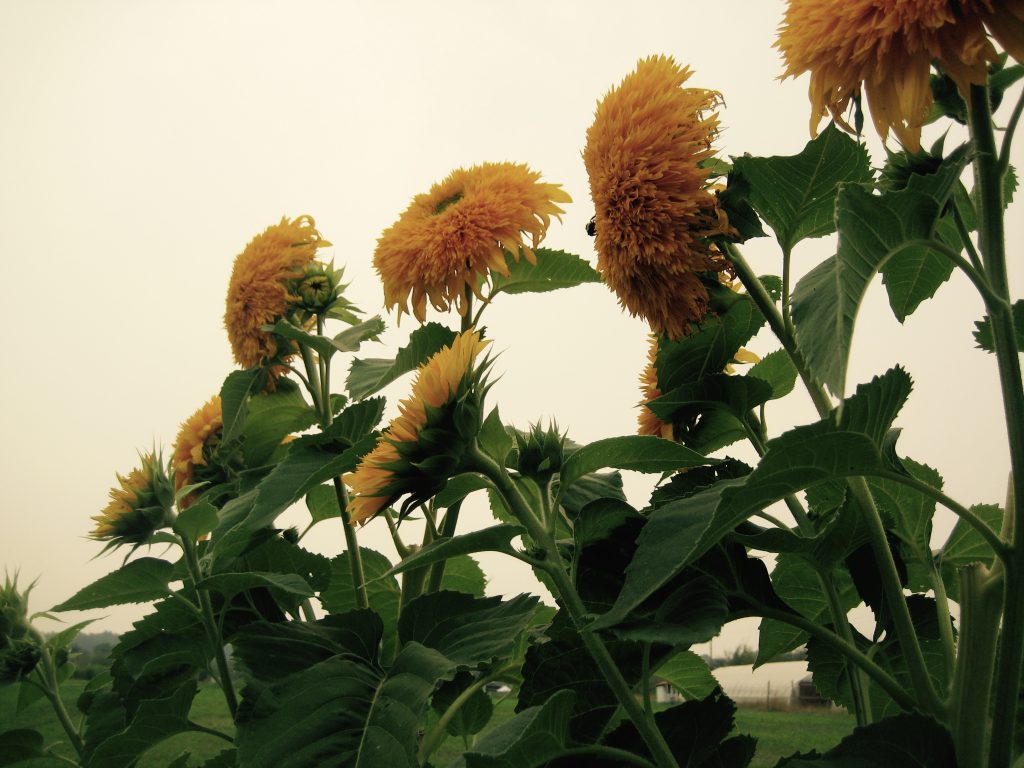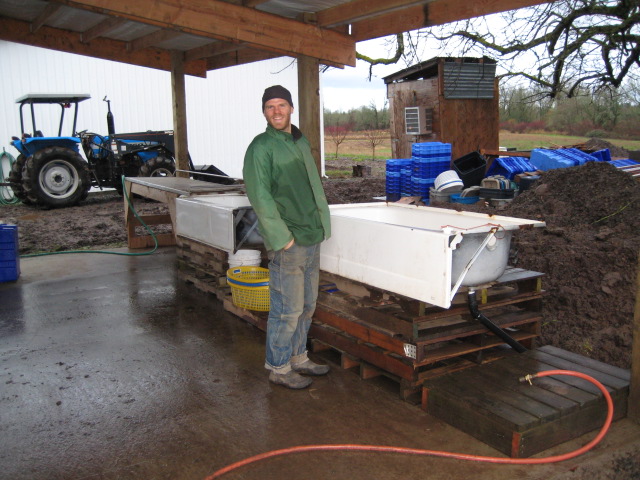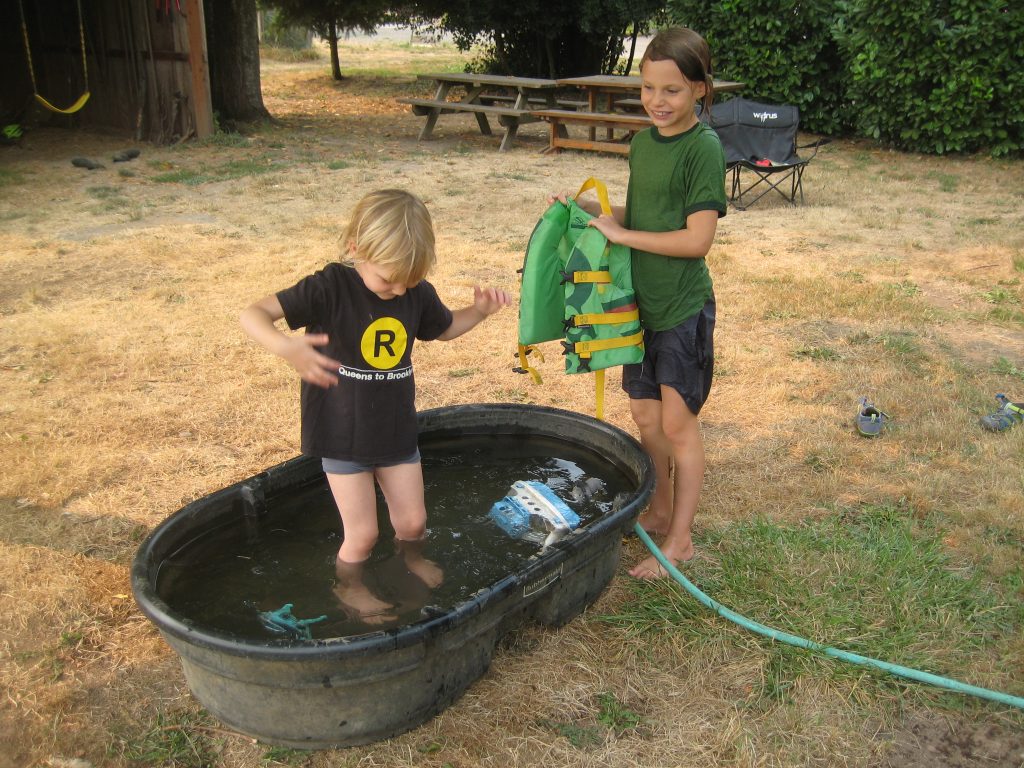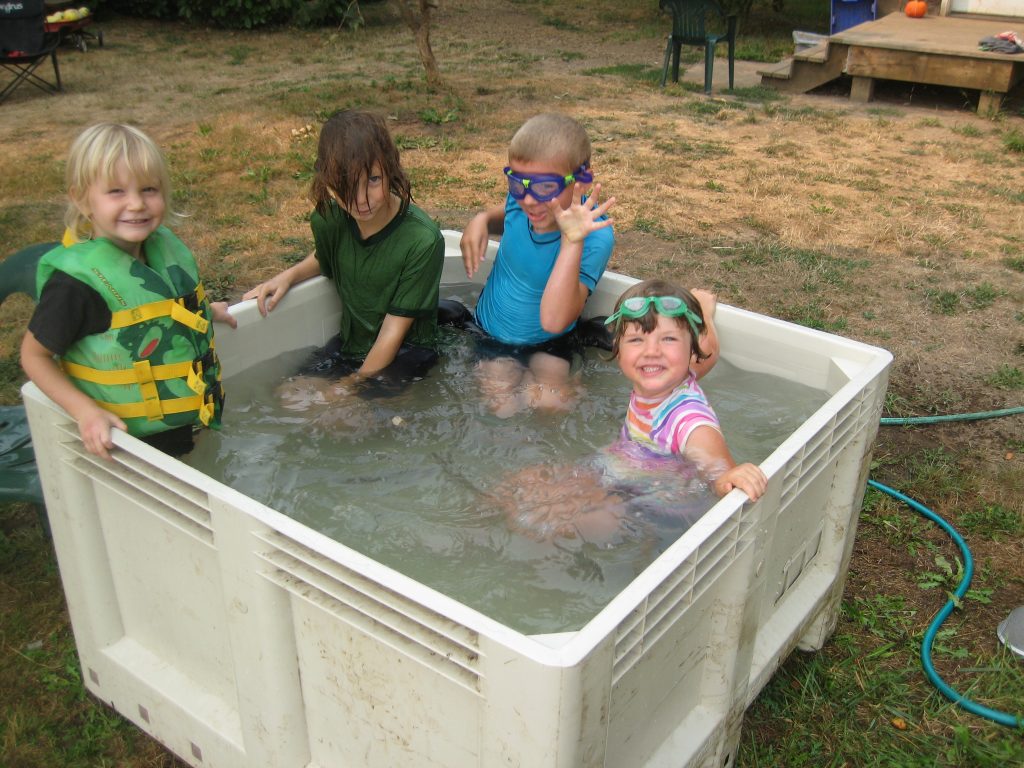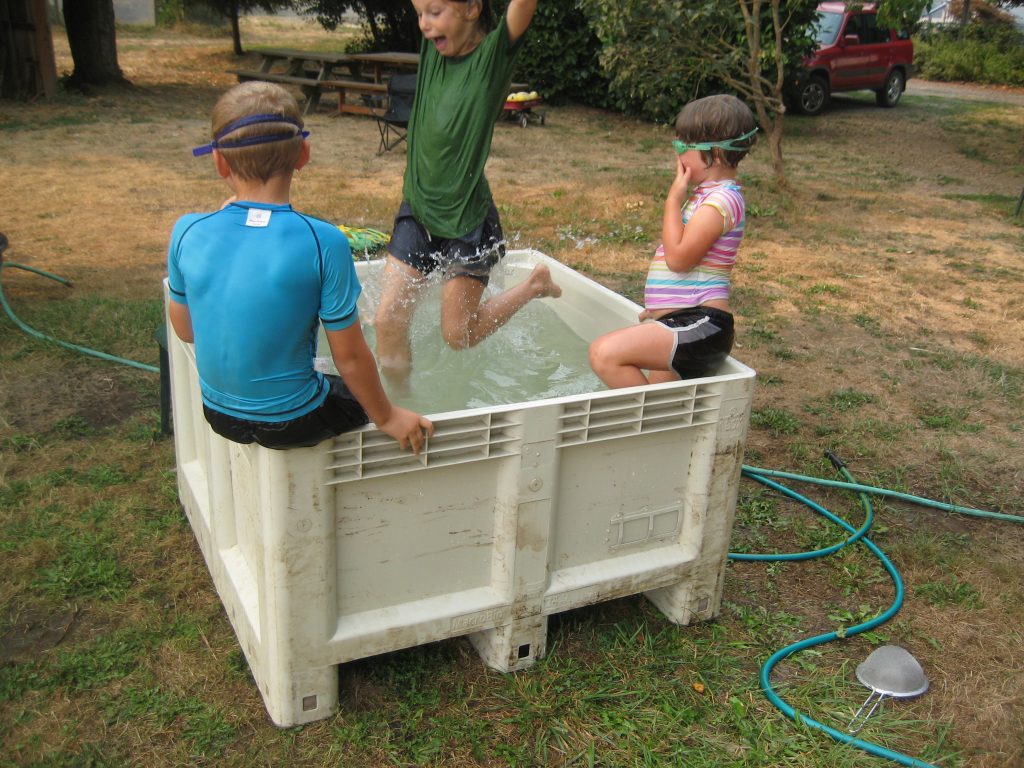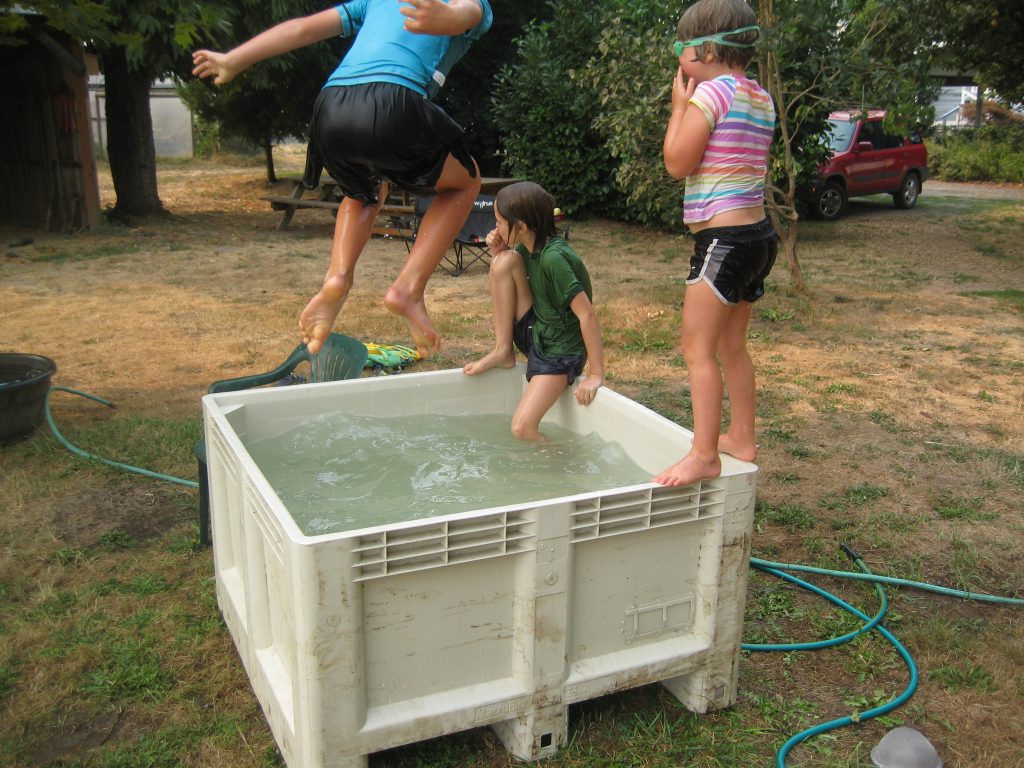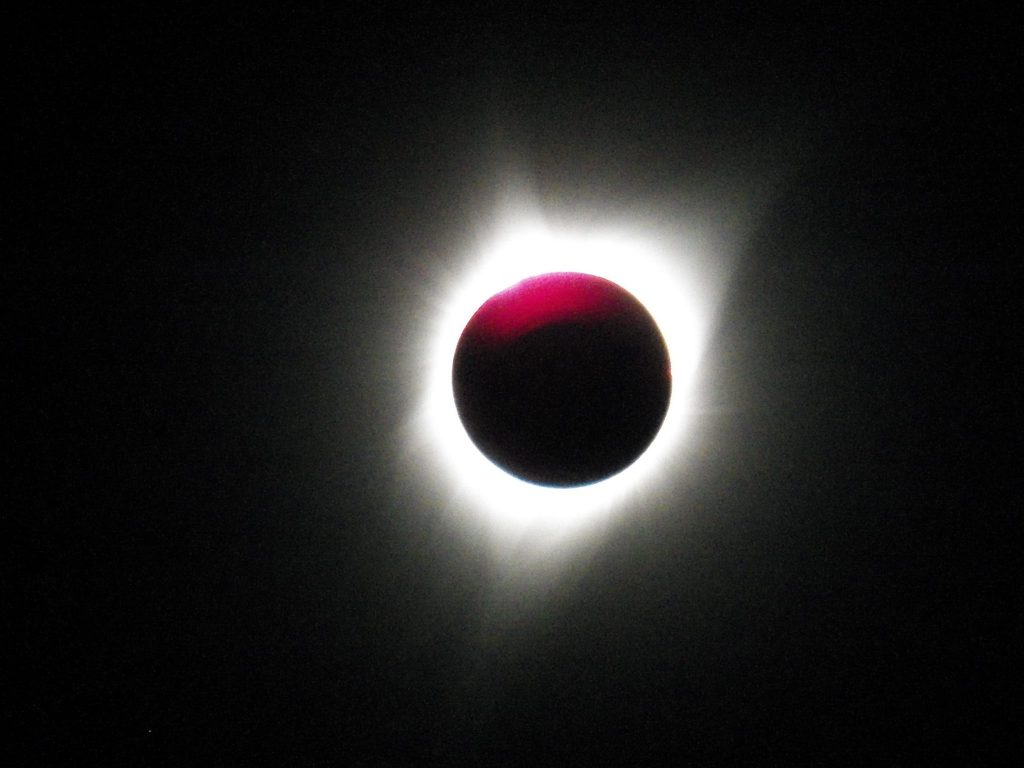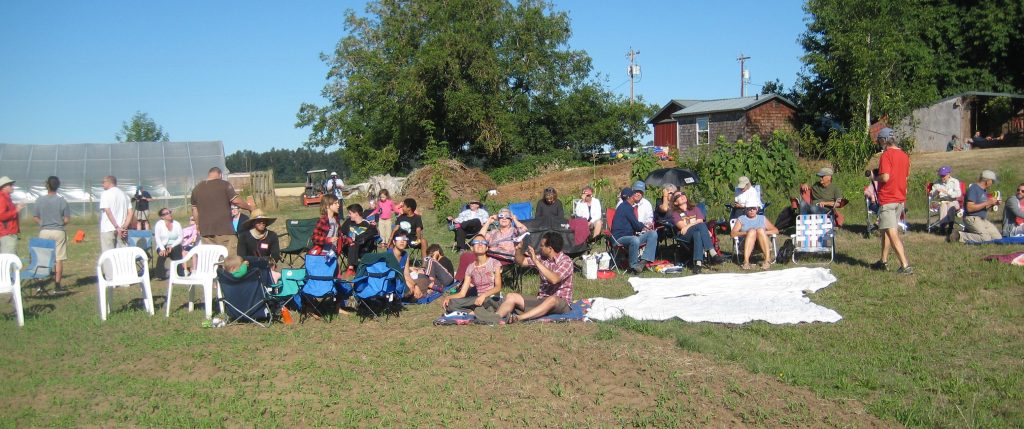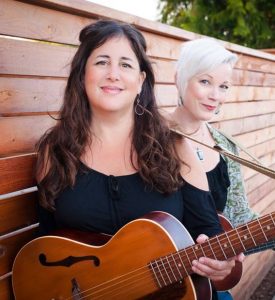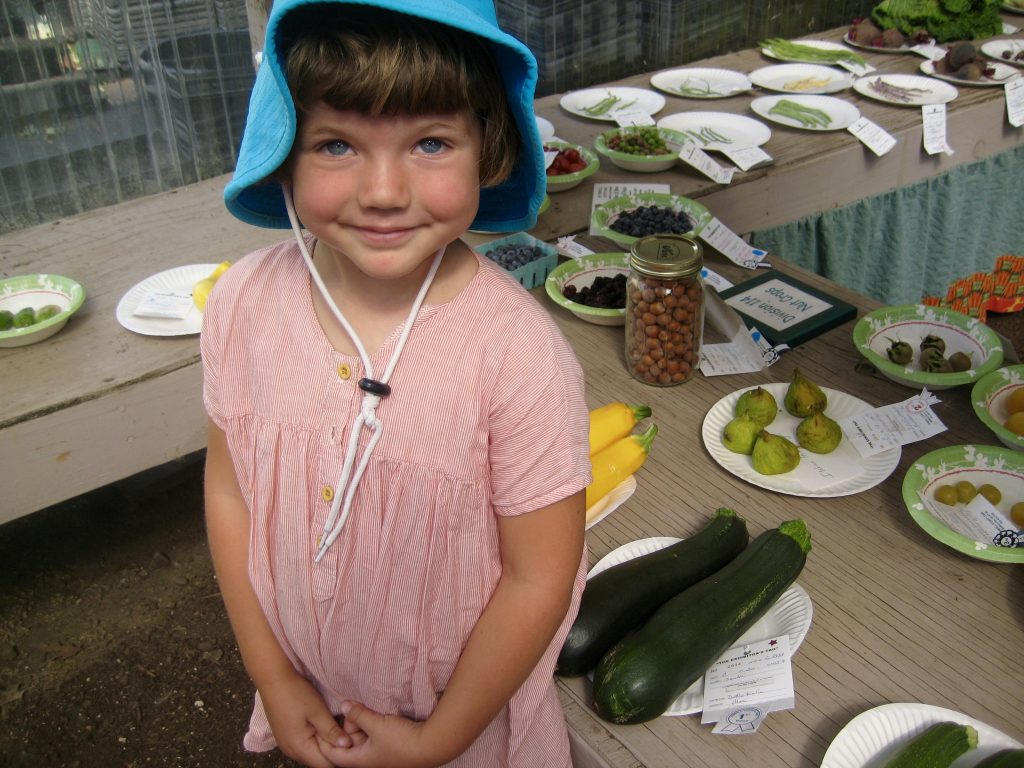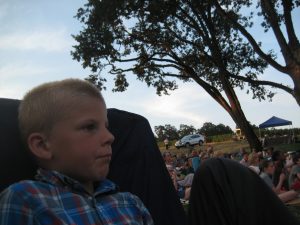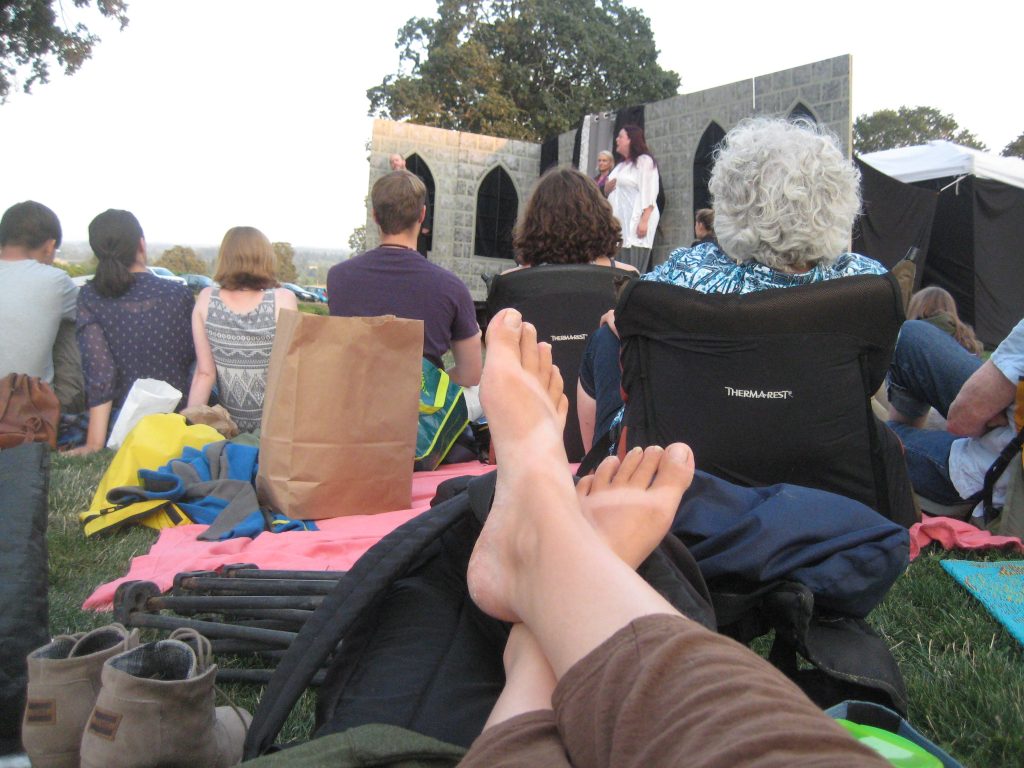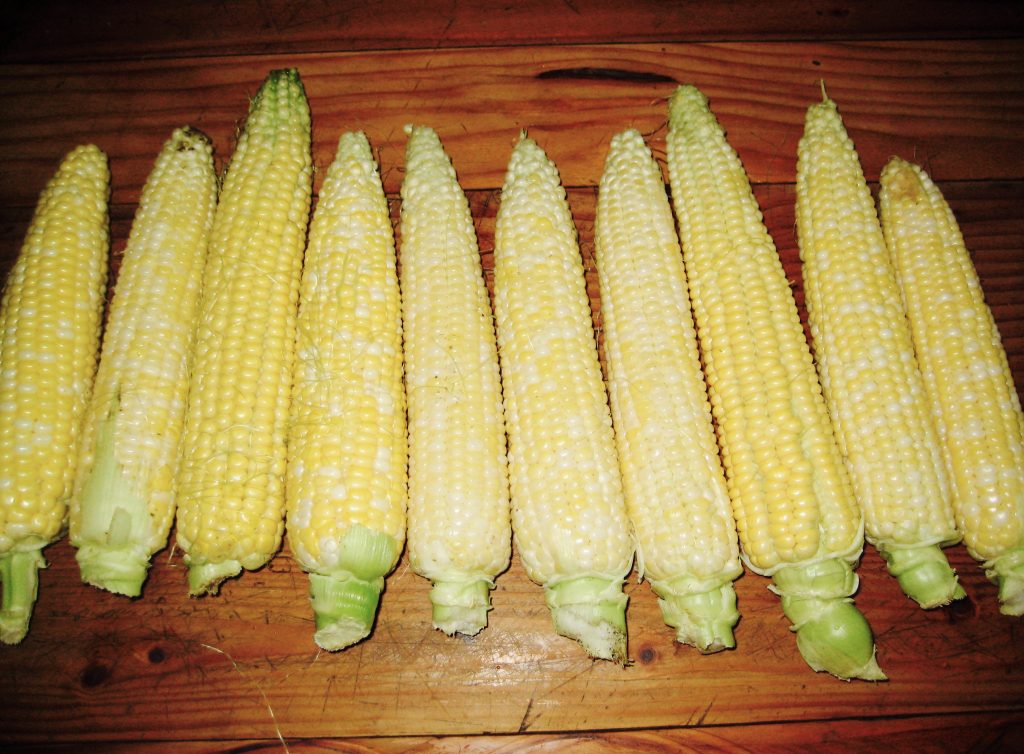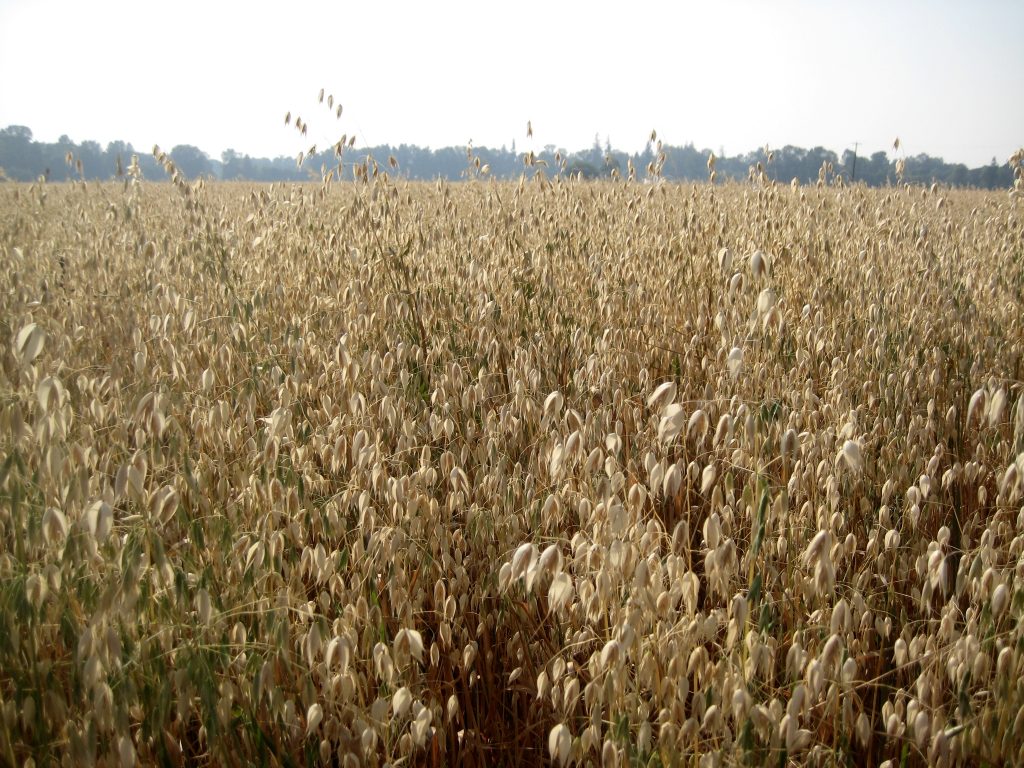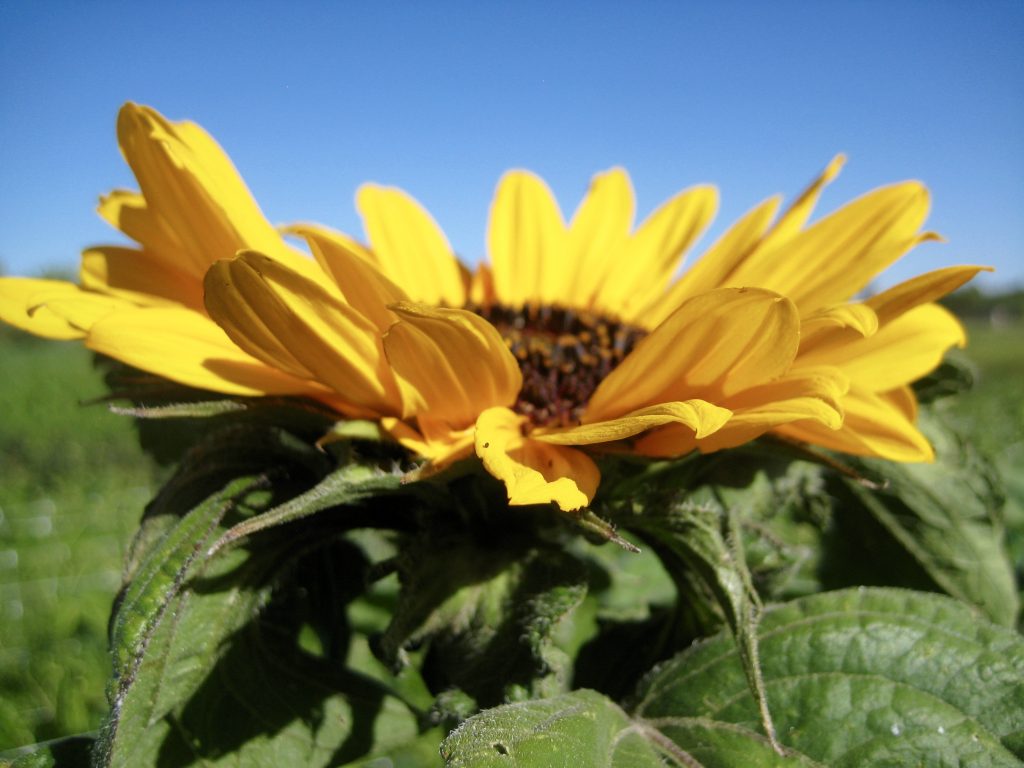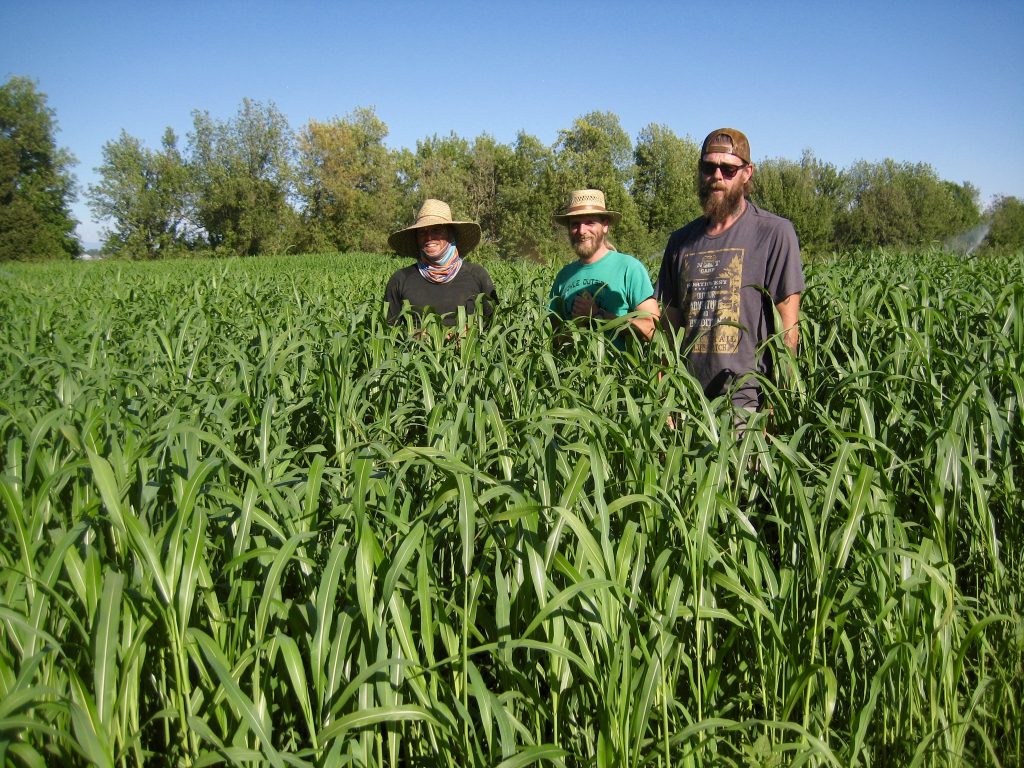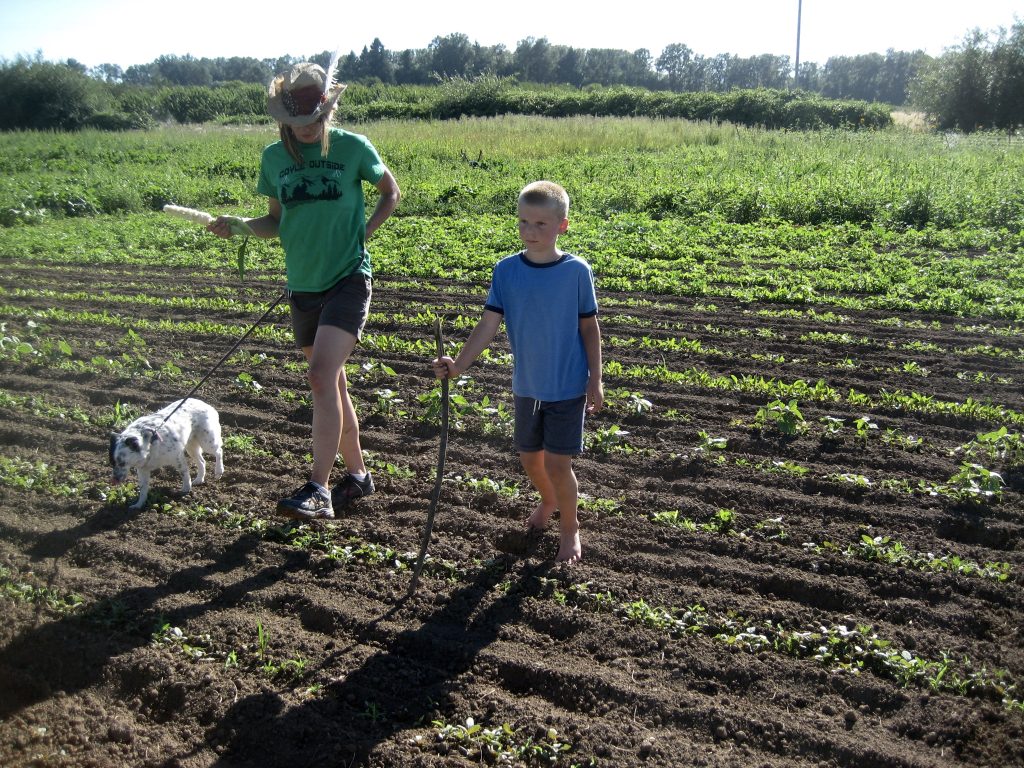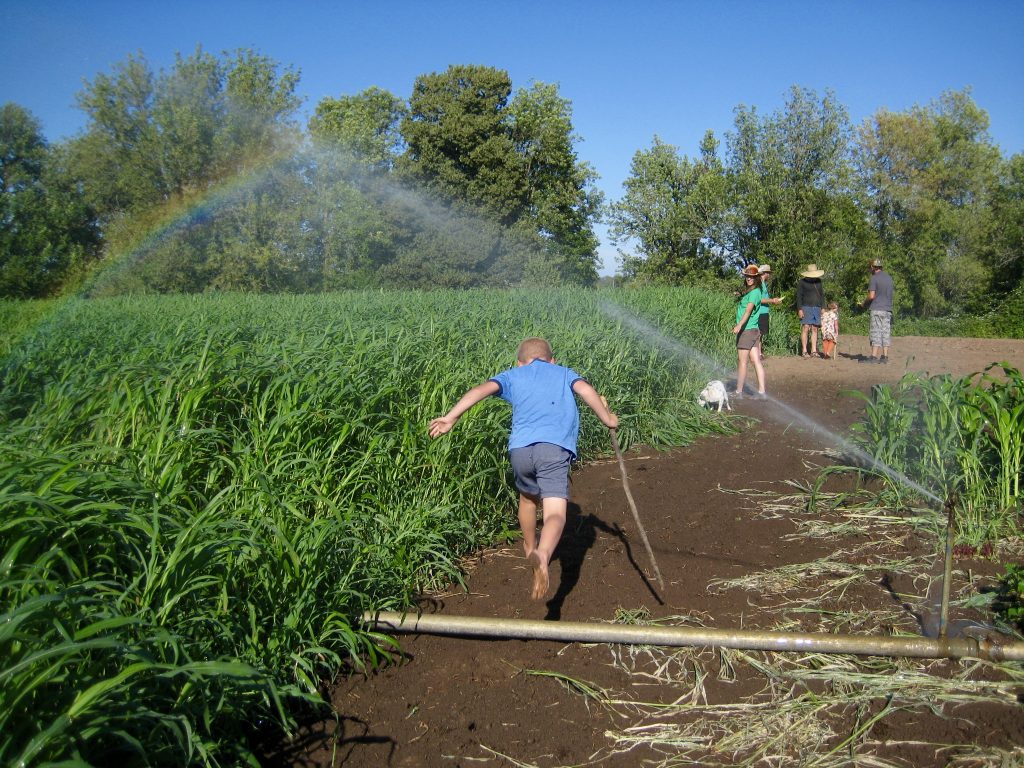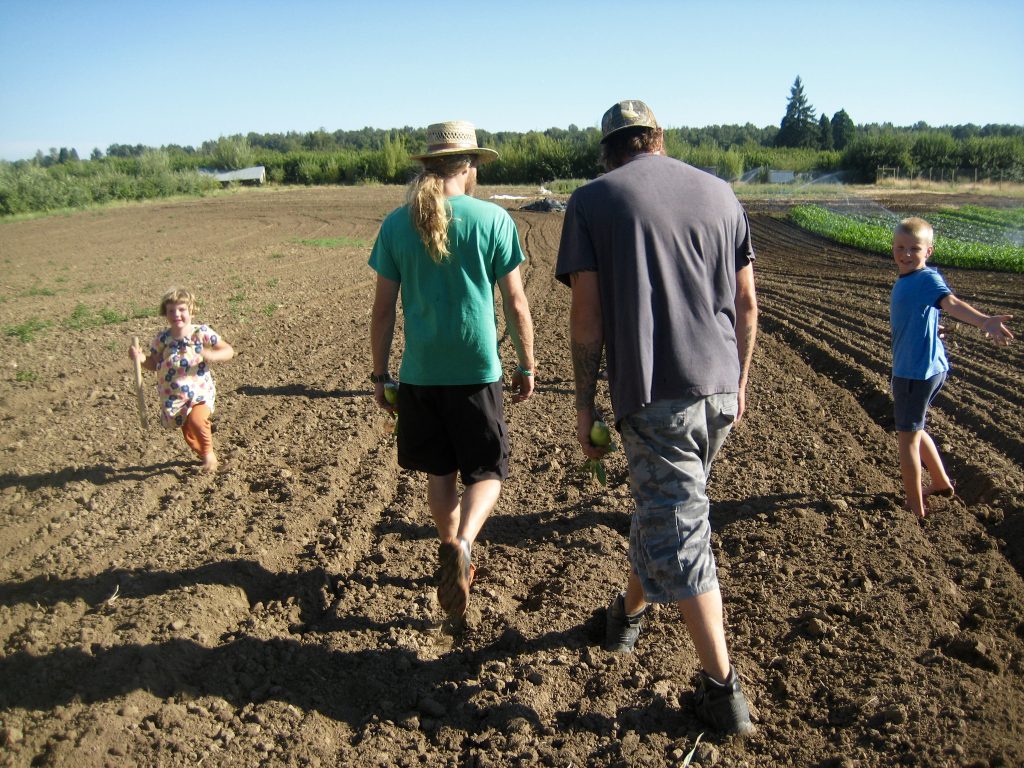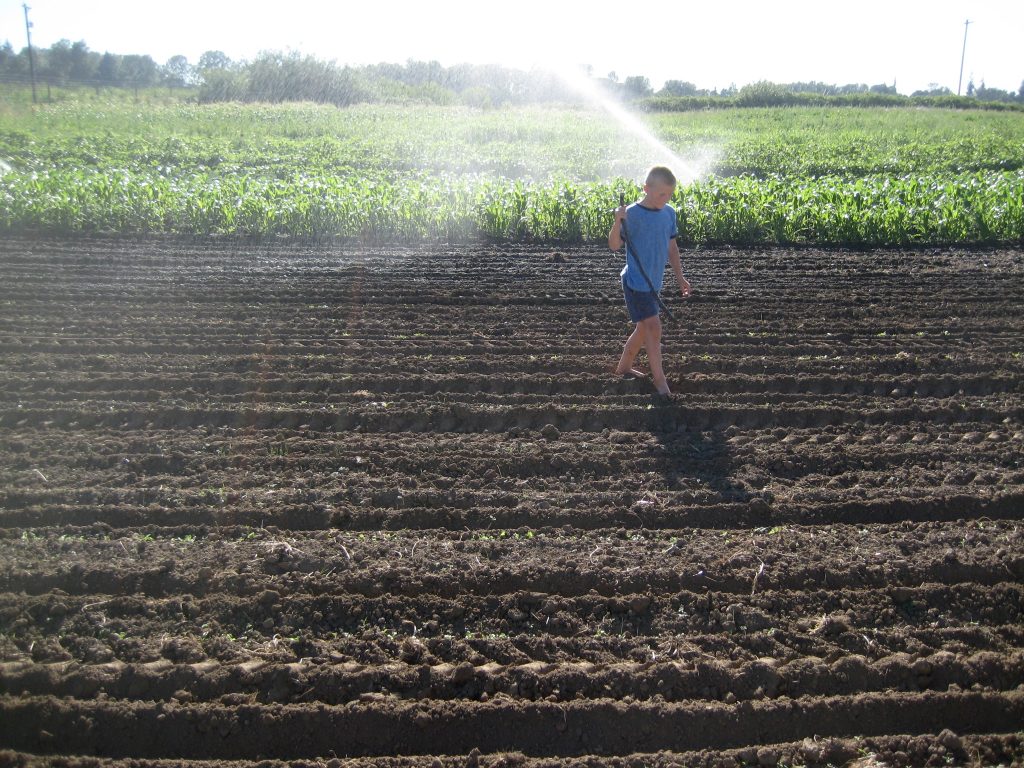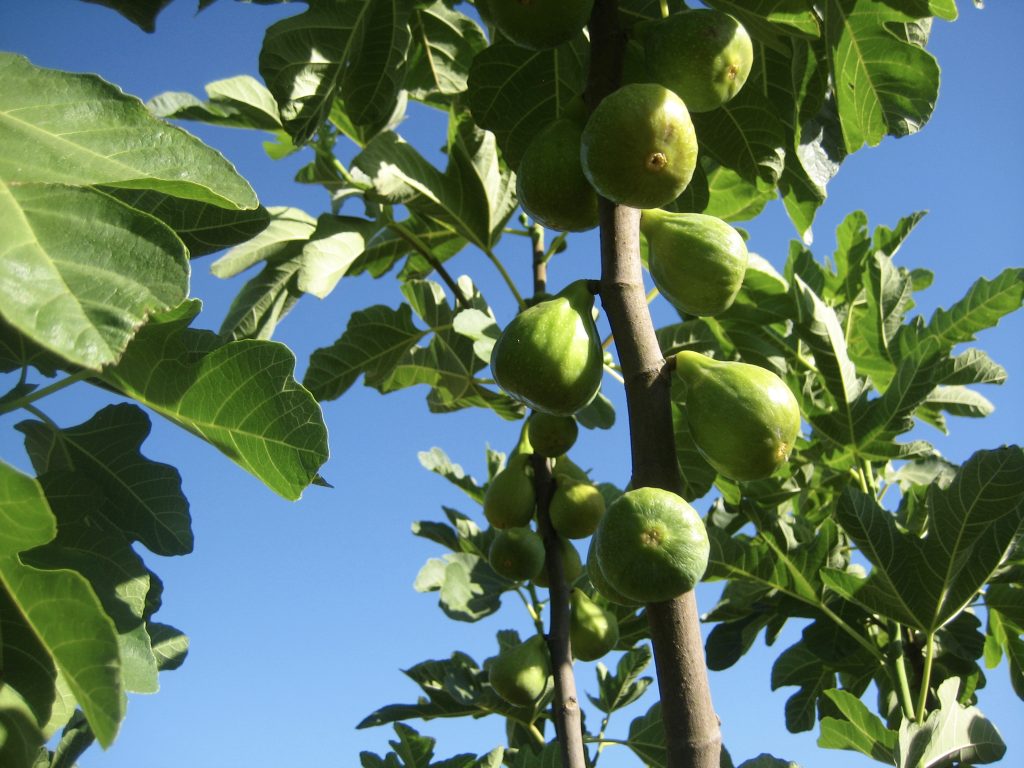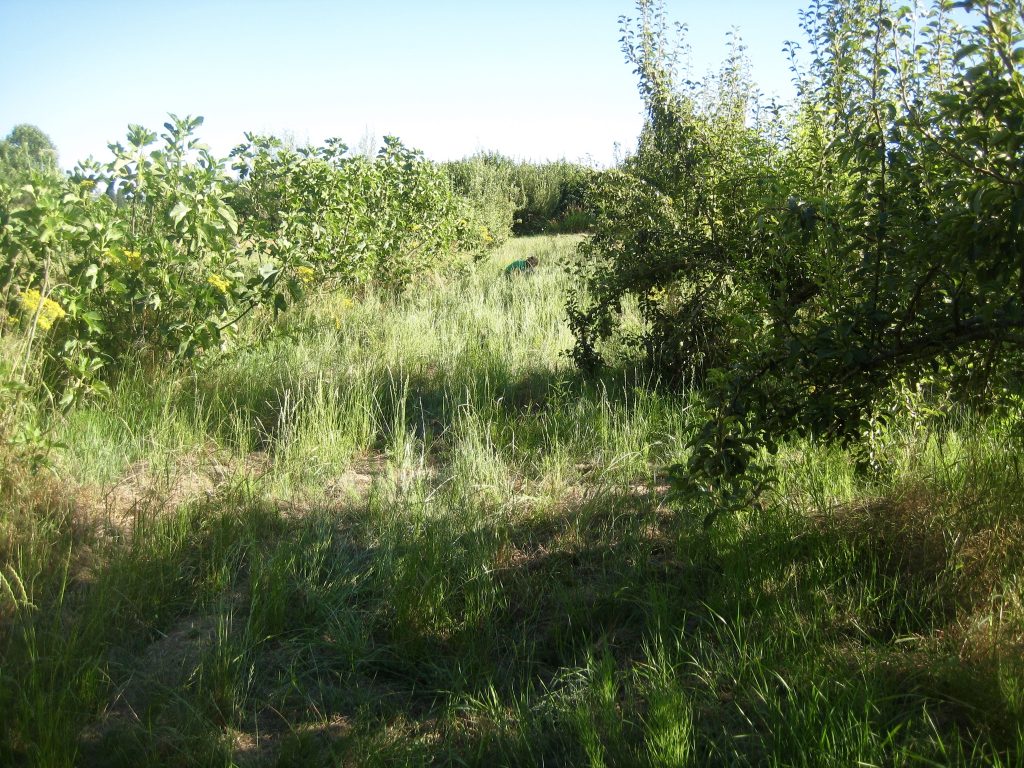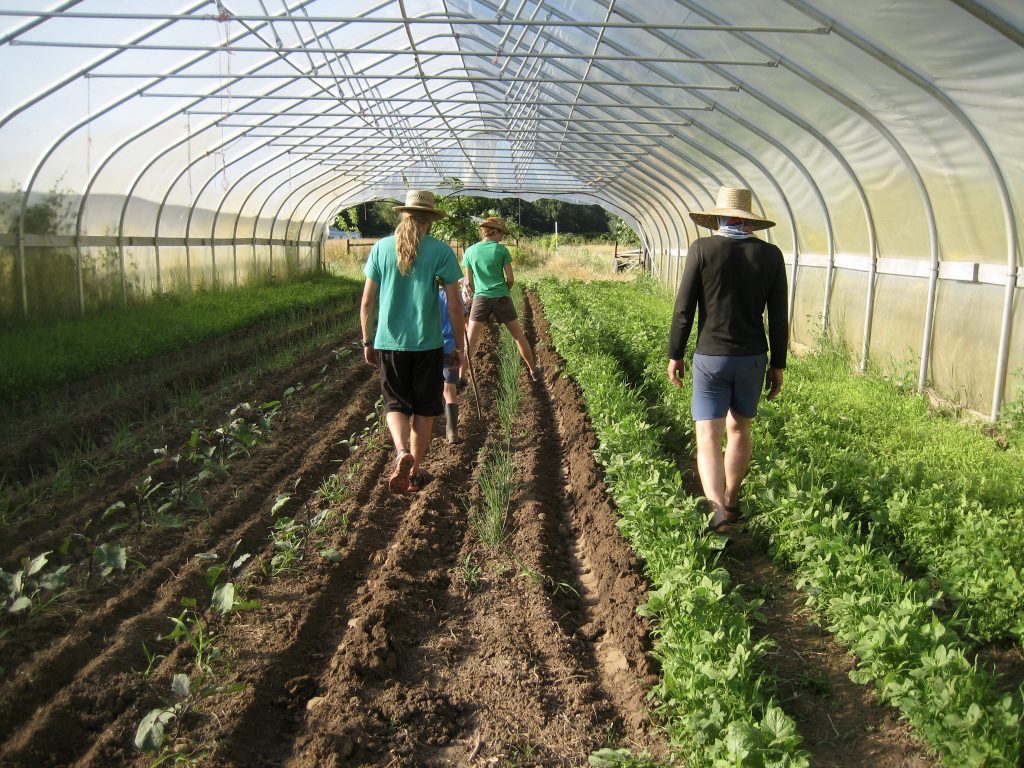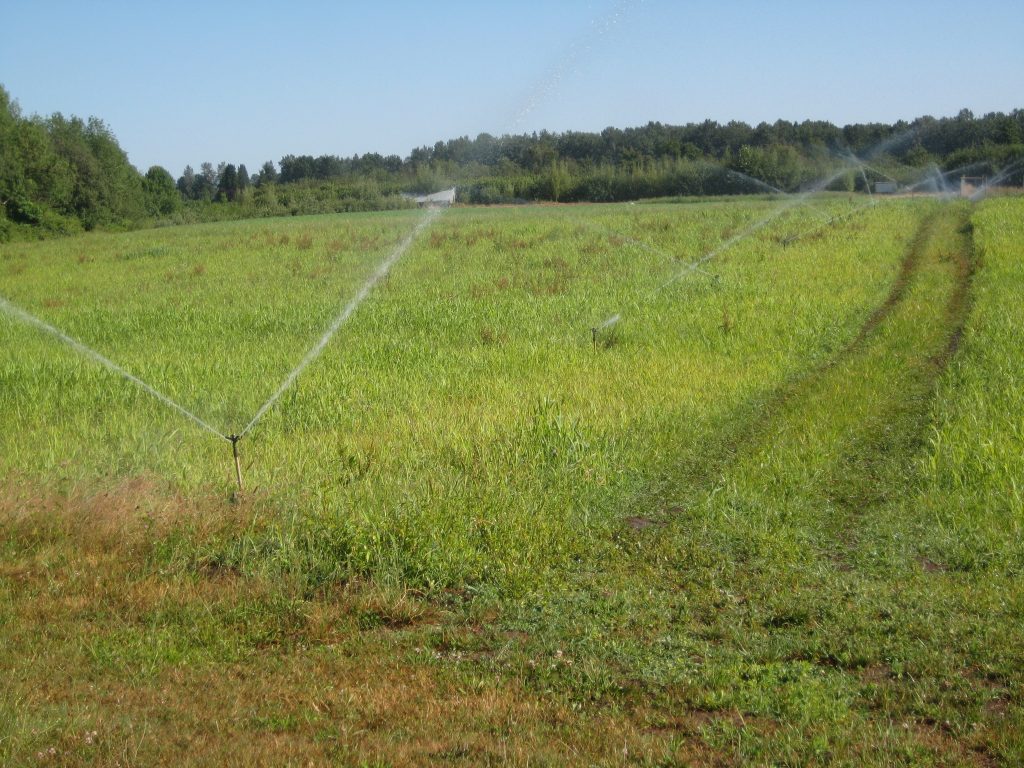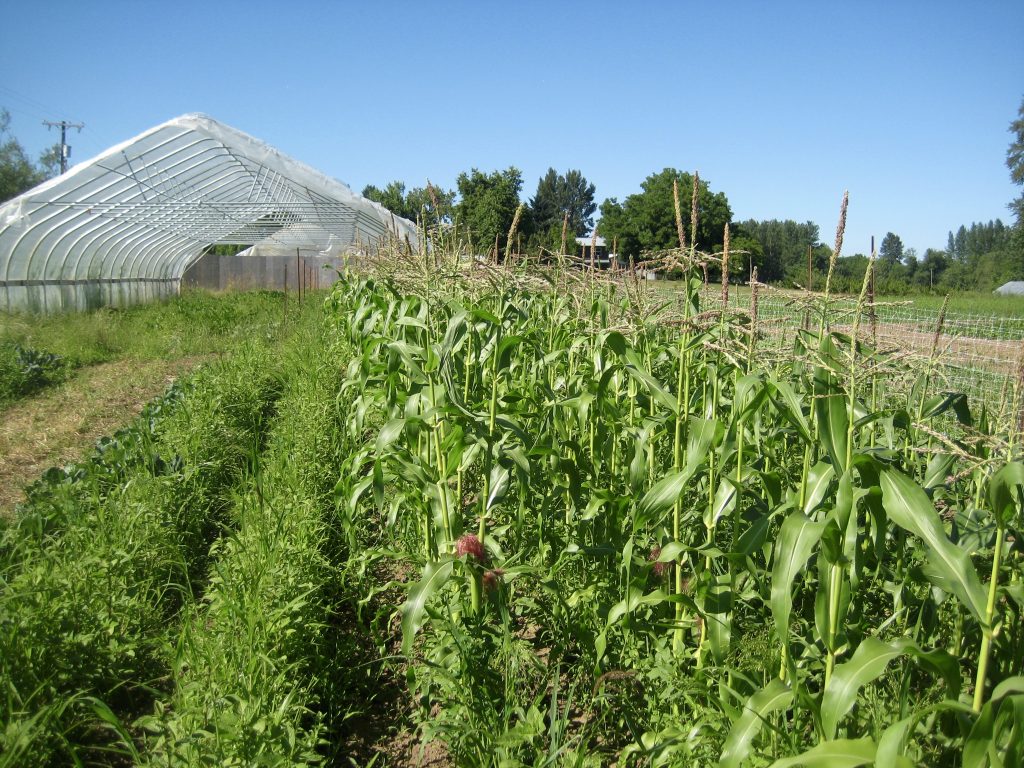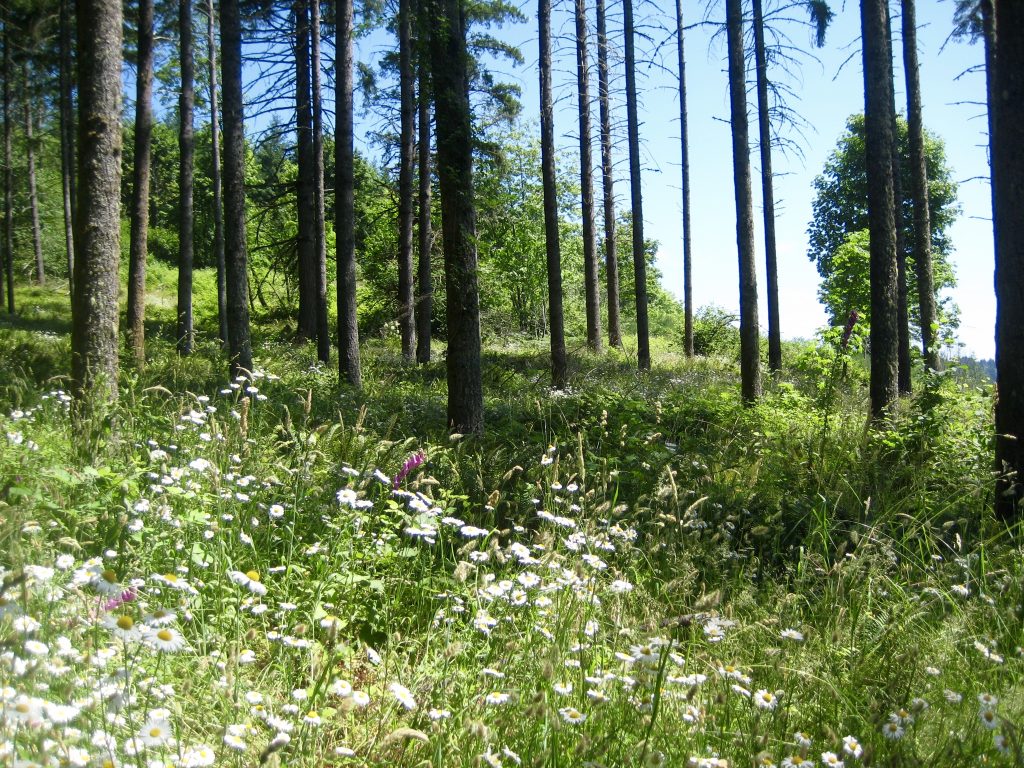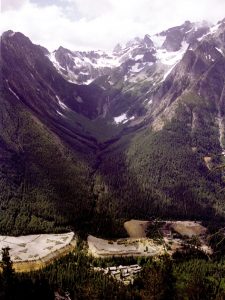
Holden Village in 2002 (the cluster of buildings at the very bottom of the photo), surrounded by wilderness.
Dear friends, today I have a personal story to share with you. It’s a story that has shaped my perspective on the world and that I look back on regularly as I continue journeying through the world, trying to always better understand how to live in the world.
It was 2002, fifteen years ago and several years before Casey and I embarked on any kind of farm journey. It was the summer before our senior year in college, and we spent our break between school years volunteering on staff at Holden Village, a remote mountain Lutheran retreat center in the Northern Cascades in Washington state. The village is located up Lake Chelan, accessible only by boat, followed by a ten mile bus ride into the mountains to the village itself. That summer, I worked in the kitchen, and Casey served as a “Maverick,” the crew who haul luggage, process fire wood and do various kinds of important physical jobs in the village.
It was a great summer spent making new friends, exploring the wilderness, and beginning to contemplate what might come after our undergraduate studies ended (the answer to this question later became spending an entire year at Holden!).
Toward the end of our time at Holden, the village hosted a group of guests from Seattle, one of whom was a man in his 50s named Doug. Doug had Parkinson’s, and his mobility was impaired enough that Holden lent him a motorized scooter to use on the hilly paths between buildings in the village.
I didn’t particularly notice Doug while he was in his village, but his story has become a part of mine. Here are the details as they were revealed over the week of his stay:
A couple of days into Doug’s stay, he drove his scooter out of the village on the road up the valley toward the major trailheads leading into the vast wilderness that surrounds the village on all sides. The gravel road ends there about a mile out of the village and then turns into forest trail. At some point on his journey, the scooter either became inadequate for the terrain or it ran out of battery charge, and Doug got off to start walking on the trail to Hart Lake, one of the most regularly used trails out of Holden. Two other hikers from the village were also headed out that way and passed Doug, saying hello on their way. Just a few minutes later, they crossed paths with another set of hikers headed back into the village on the same trail.
Even though Doug should have been right ahead of them, those return hikers never saw Doug.
By the time of evening vespers, Doug’s group had noted his absence and his scooter had been found unmanned far from the village. Because Holden is so remotely located, the village has its own chain of incident command, a volunteer fire crew, a professional medic, and volunteer first responders trained in wilderness rescue and first aid. These systems have saved many lives over the years, and stories of successful rescues and seeming miracles are told and retold by villagers as symbols of the awesome things the community can do.
That evening, those rescue systems began to go into place, beginning with thorough, systematic searches of the village itself — every basement, every attic, every single closet was searched. Doug was not found.
First responders hiked the trail where Doug was last seen, calling his name and checking the areas adjacent to the trail. Doug was not found.
The sheriff was called in to help coordinate a larger search of the area. He brought in trained search-and-rescue dogs, several sheriffs deputies, and forest rangers. Anyone in the village who was up for the physically demanding task and could temporarily leave their work area was invited to help in the effort. Casey and I both volunteered to help.
Before searching in the woods, we geared up by putting on multiple layers of clothing to protect us from the foliage we’d be walking through: long pants and boots, covered by gaiters to protect our ankles and calves. We tucked in our long shirts. We wore gloves, which we tied over our sleeves to keep any skin from being exposed. We wore hats and safety glasses to protect our faces.
We were organized into long lines of people and then we very slowly, very methodically walked through swaths of the forest in those lines. We moved slow enough that everyone could stay together, side by side, and we walked through every barrier — through stands of slide alder and willow; through patches of devil’s club; through wild roses, which have the sharpest thorns of all. We paused to look in every possible hiding spot — under logs and in thickets. We were slapped by leaves and branches as we went, any exposed skin left with scratches by the end of the day. Sweat soaked our clothes through from the hot summer weather and our exertion. As we went, we communicated constantly to keep everyone alert and make sure we were seeing everything.
We moved through large chunks of the forest and avalanche chutes like this. More volunteers walked through Railroad creek, which runs through the valley and passes near the spots where Doug was last seen and where the scooter was found. The village itself was searched again and again.
After the first couple of days, our efforts turned from finding Doug alive to efforts to find his body. My thoughts shifted from a desire to find Doug to something more complicated: Please let him be found, but please don’t let it be me who finds him. I just wasn’t sure I was ready to find a dead body in the woods, but still we searched. Casey and I threw our young and able bodies into the search with a passion, joined by others. Over the week of searching, a total of over 50 villagers spent some amount of time searching for Doug.
Meanwhile, in the village those unable to physically search kept up prayer vigils. Other people went about the important business of keep the village running, feeding us all, cleaning rooms for guests, organizing evening vespers.
Doug was not found.
After five and a half days of searching, the community and the sheriff made the decision to end the search. The wilderness was so enormous. We felt confident we had thoroughly searched the areas that seemed most likely for Doug to be. With his limited mobility, it was hard to imagine that Doug could have walked himself far off the trail through all that dense foliage that challenged even the young and fittest among us. We didn’t understand how he could have just disappeared, and yet Doug was not found.
The sheriffs staged a fake successful search operation for the dogs, to keep up their morale for future searches. But the rest of us were left to process our complicated feelings about our responsibility to this person who was lost and not found. We now had a new village story, one without a miracle.
At vespers, we celebrated Doug’s life — hundreds of people gathered to hold his memory in their hearts, many of whom had never even actually met him. Friends of his in his group spoke about his life. One of Doug’s friends, who was Native American like Doug, played the drum and sang a chant that sounded like a prayer and wail mixed into one haunting plea, rising over the room with the scent of burning sweet grass and pulling us all into the force of its sound. People wept for Doug.
And here, toward the end of my story about Doug, I want to tell you another important detail about Doug’s life. Doug was a formerly homeless man who came to Holden with other residents of the managed care facility where he was living in Seattle. He was born in Alaska and had come back from serving in Vietnam to suffer from post-traumatic stress disorder. He had spent decades of his life on and off the streets, struggling with substance abuse, instability, and health challenges. His life had been hard. After his passing, there was no one to call or notify — no family. All of his few friends were on the trip.
At Doug’s memorial, the counselor who traveled with the residents on the trip spoke about what life was like for Doug on the streets of Seattle, where his existence was ignored, where he was (at best) invisible to the wider community, where he tried to stay hidden much of the time. He talked about how men and women like Doug go missing all the time on the streets of Seattle, and no one notices. No one searches.
Among Doug’s few personal items left in his room was a book about Native American vision questing. We pondered whether perhaps Doug, finding himself in the wilderness, decided to lose himself one last time. Perhaps he saw the beauty of the woods and decided on some level that it would be better to stay here, even in death, than to return to a life that would continue to challenge him with the constant pull back into substance abuse and street life. It’s likely that a man familiar with the street could find ways to hide himself so that even our careful efforts wouldn’t uncover him. We wondered if we didn’t find him because he didn’t want to be found.
One person in the village shared that she had had a dream that she heard Doug’s voice speaking to her and he said that he was in water and that he was at peace.
We took what comfort we could in these possibilities, but we would always wonder whether we just missed him — whether he had an accident and was lying unconscious or immobile just beyond the boundaries of our searches. We will never know. Casey and I carry a part of Doug and his memory in our hearts to this day.
We also carry with us the profound example of what we witnessed and participated in that week — the power of an active love that sees the humanity and value in every single person. It is an example that has created a foundational story for me in my own life, one that I am always striving to live up to. What does this example mean for my daily life, in all its smallness and bigness? I feel like I always have more work to do in following this example, but the story is there in my heart. And when I pause to remember it, I look at my world with completely different eyes.
Doug’s story perpetually asks me to consider whether there are or should be boundaries on my compassion for others. Simply by arriving in Holden, Doug became a member of the community, fully fledged enough to warrant hundreds of people turning their world upside down to search for him. To me, the experience felt like a living example of Jesus’s shepherd parables.
Right now in McMinnville, there is a lot of talk about our county’s homeless population, which has appeared to grow in numbers (and certainly in visibility) in recent years. The voices I hear addressing the big question of what to do all acknowledge the complexity of the question. Implicit in the conversation is: who is responsible? That is the hard question, isn’t it?
When we are faced with people who are suffering or struggling, I think it is a natural human desire to find the differences between us and them. We want to see ourselves as fundamentally different or separate because to consider the possibility that we too could so suffer is of course terrifying. It is much easier to mentally check all the boxes as to how we could never end up in that same situation, therefore giving us peace of mind and also freeing us from feeling responsibility to help another human being. It is easier to place all the responsibility on the suffering-ones for their condition. “If only they’d get sober … if only they’d work harder … if only they valued stability … if only their behavior was less offensive to the community … then we could help.”
We do this in our daily lives too, with our friends and family, mentally separating ourselves from their struggles in order to keep our comfortable position of distance. In that act, we miss out on opportunities to grow in love with others.
And, of course, sometimes when someone is struggling it really is truly hard to know how to help. It really can feel futile to offer assistance when from the outside it looks like someone is making poor choices again and again or stuck in unhealthy patterns, whether that be a person living on the street or a friend living in an abusive relationship.
And maybe the point isn’t always that we need to fix others’ problems. Maybe the point, when faced with a person who is struggling, is to be kind. To see their humanity. To recognize that really truly every single person is trying their best in life with the gifts and skills they have at any point. To see each person as precious, regardless of how much of a mess they’ve made of their life so far. To see what we share rather than what is different between us. To stop creating artificial barriers based on our economic situations, our legal status in a country, our nationality, our gender, our language, our age, our education, our abilities, our “claim” to a community’s resources, or anything else. We can see people as human, even while they might remain in their problems. We don’t have to fix them before seeing them as human, and sometimes just the act of seeing someone as human can be the most powerful thing we do. Real relationships can be powerful.
I believe that any complicated solution needs to start from this place. Step one: fully and deeply acknowledge the humanity of others. Step two: ??????? Step two will differ from situation to situation of course, but I think it is almost always obvious to tell when a solution comes after step one comes first. The solutions look fundamentally different. Sometimes the shift in our paradigm about another person actually becomes the solution. But other times further solutions are needed, and after accomplishing step one (acknowledge others’ humanity), further solutions are usually more cooperative and caring and don’t resort to violence as a “solution.” For example, “violence” in the case of McMinnville’s street population could be asking people to not “exist” within a community — to move away completely or to hide themselves from sight.
And, dudes, I have to stop here right now and say that I am speaking from the bottom of my heart, and that I am writing about my highest ideals. Like many people, I have built walls and distance between myself and those who are suffering or struggling. By writing this newsletter, I am not in any way suggesting that I’m speaking from a position of accomplishment on this topic. I personally am not a saint, and I have to continually return myself to step one (acknowledge others’ humanity) every single day. In fact, there are days when I don’t even do this — sometimes weeks or months might pass without me remembering about step one — but there are days I do remember. I have habits and stories and values in my life that help me return and return again (over and over and over) to what I see as one of the most holy acts we can do as humans. My faith inspires me to believe that deep levels of kindness are crucial for humanity. And I hope to grow in my own kindness (through thought and deed) over my own lifetime.
I also fundamentally believe that being kind and doing step one (acknowledging others’ humanity) is very, very hard and requires discipline and intention, especially in cases when we find those humans to be offensive or problematic or scary or confusing to us. People who seem to jeopardize our own quality of life in some way and therefore seem to be engaged in violence against us already. Those are the kinds of people that Jesus spoke about (and to!) often in his sermons and parables about how to live. When he asked his followers to love their neighbor, he really wasn’t asking for something easy. Neighbors are often some of the hardest people to love; they are people we share space and resources with but not always by choice or because of common ground. But they are the people that we have in our life with whom to practice the art of love.
Doug was my neighbor for a few days and he taught me a life lesson by his presence and subsequent absence. Today I have different “neighbors” in my life and new lessons to learn (as well as those same old lessons again and again). Again, these lessons are so hard to know how to apply. But we can always start from that position of empathy, of acknowledging the humanity of others (including people who might seem to be in positions of power and acting badly from that position too!). Complicated stuff, my friends.
In closing, I want to share a poem by Brian Doyle that I just happened to read last night before bed. Brian Doyle was a Portland-based writer who passed away this May. Reading his words is one way that I find my way back to step one (acknowledge other’s humanity!) over and over again. His poems are almost always miniature stories, this one included:
Poem for Grace Farrell (1976-2011)
A thin column in the newspaper; she died in an alcove
Outside Saint Brigid’s Church. She was from Wicklow.
She had been an artist. She came here at age seventeen.
She drank. She married a man who slept on the avenue,
Not near the church. He didn’t like the church and said
That the church talked to him at night in a stern rumble.
He beat her. Her friends on the street beat him and told
Him to stay away from her. Her alcove had a roof on it,
In a sense, as there was a construction scaffold above it.
The folks like us—nobody know us until we are dead,
Said a friend of hers on the street. Her family in Ireland
Accepted her body, from the medical examiner’s office.
We told them that she was homeless, but they chose not
To believe that, said the examiner. Her name was Grace.
So that’s the end of the article. But what if that’s not the
End at all? What if the old church spoke to Grace Farrell
That night, held her in its southern arm, sang very gently
To her as she died, caught her spirit as it hit the scaffold,
And handed it up, weeping for the sweet broken woman?
Couldn’t that be? Couldn’t it be that we don’t know who
She was and wanted to be, and maybe she was a wonder?
That could be. Maybe she was what she was invited to be.
Maybe her soul said yes to pain in this world to save kids
Somewhere else. Maybe she was brave in ways we never
Will know now. Every time I think I know something for
Sure I get the gift of not being sure at all; isn’t that grace?
Enjoy this week’s vegetables …
Your farmers, Katie & Casey Kulla
~ ~ ~
Meet this week’s vegetables:
- Apples
- Methley plums — I can’t even imagine how many of these plums we have eaten over the last week. They are the “go to” snack food around our house right now!
- Eggplant — Some fun new summer foods are showing up this week: eggplant! Green beans! Green peppers! Summer cabbage! Enjoy!
- Green beans
- Green peppers
- Basil
- Salad mix
- Cabbage
- Kale
- Chard
- New potatoes
- Beets
- Zucchini & “cousa” squash — People always ask about the difference between our two kinds of green zucchini. The long dark green ones are the traditional Italian style zucchini. They have a slightly thicker skin than the lighter one, which is a Middle Eastern type of zucchini. Because of its thinner skin, it lends itself well to stews that benefit from the zucchini breaking down more. Both are delicious and can really be used interchangeably in recipes.
- Garlic

